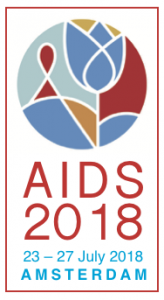Viral load testing in Latin America and the Caribbean
24 August 2018. Related: Conference reports, Treatment access, Diagnostics, World AIDS 22 Amsterdam 2018.
Information about routine access to viral load testing in 31 countries in Latin America and the Caribbean (LAC) was presented in a poster by researchers from the Pan-American Health Organisation.
Results were compiled from official surveys (UNAIDS/WHO/UNICEF) at the end of 2016 to assess existing gaps in viral load testing policies, capacity and coverage.
All countries had access to viral load testing but guidelines varied for recommended testing frequency: two tests per person per year in 61% countries (19/31), annually in 32% (10/31) and more frequently in Costa Rica and the Bahamas.
The poster compared the number of viral load tests that were performed over a two-year period with the expected number needed, based on the numbers of people who were positive and the national policy for testing.
Of 22/31 countries with this data, 7/22 exceeded 90% of estimated need (range 92% to 170%) with 11 countries reporting 51% to 87% of expected use, and four countries <50% (range (16% to 48%).
A second analysis based on a standardised policy of two viral load tests a year produced similar results, with 6 countries at >90% use, 12 countries with between 50% to 90% use, and 7 countries at <50% use.
In this analysis, lowest use was reported for Haiti (16%), Cuba (21%) and highest use for Brazil (99%) and Bahamas (110%).
Further results by country are reported in the abstract and poster.
Reference
Leal A et al. Are all people on antiretroviral treatment having their HIV viral load monitored? Gaps analysis in Latin America and the Caribbean. AIDS 2018, 23-27 July 2018, Amsterdam. Poster TUPEB044.
http://programme.aids2018.org/Abstract/Abstract/12601


 Simon Collins, HIV i-Base
Simon Collins, HIV i-Base